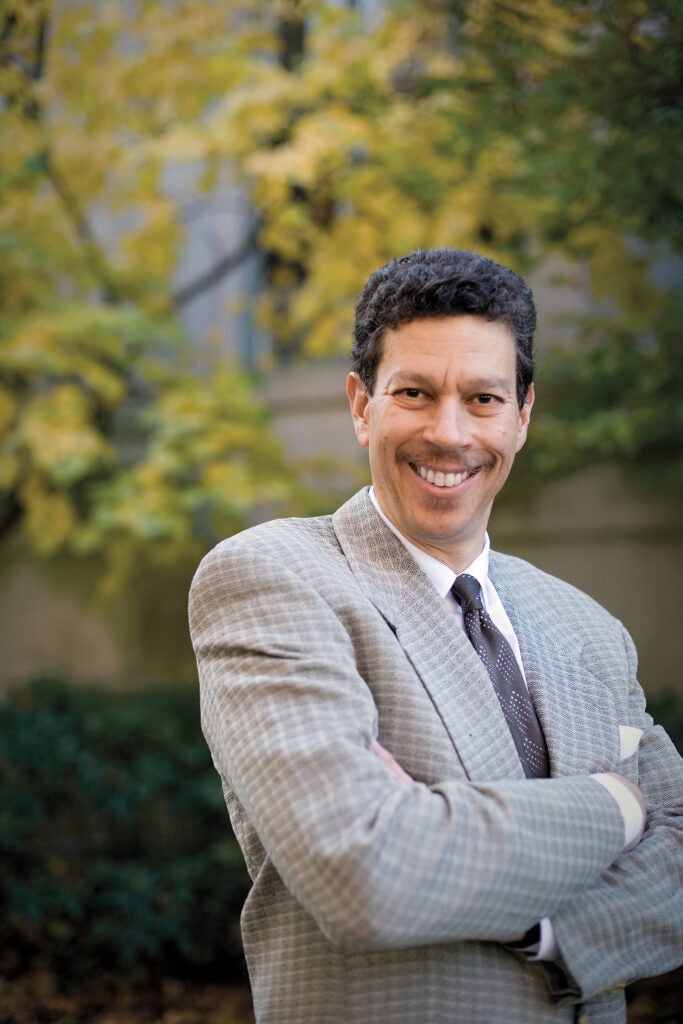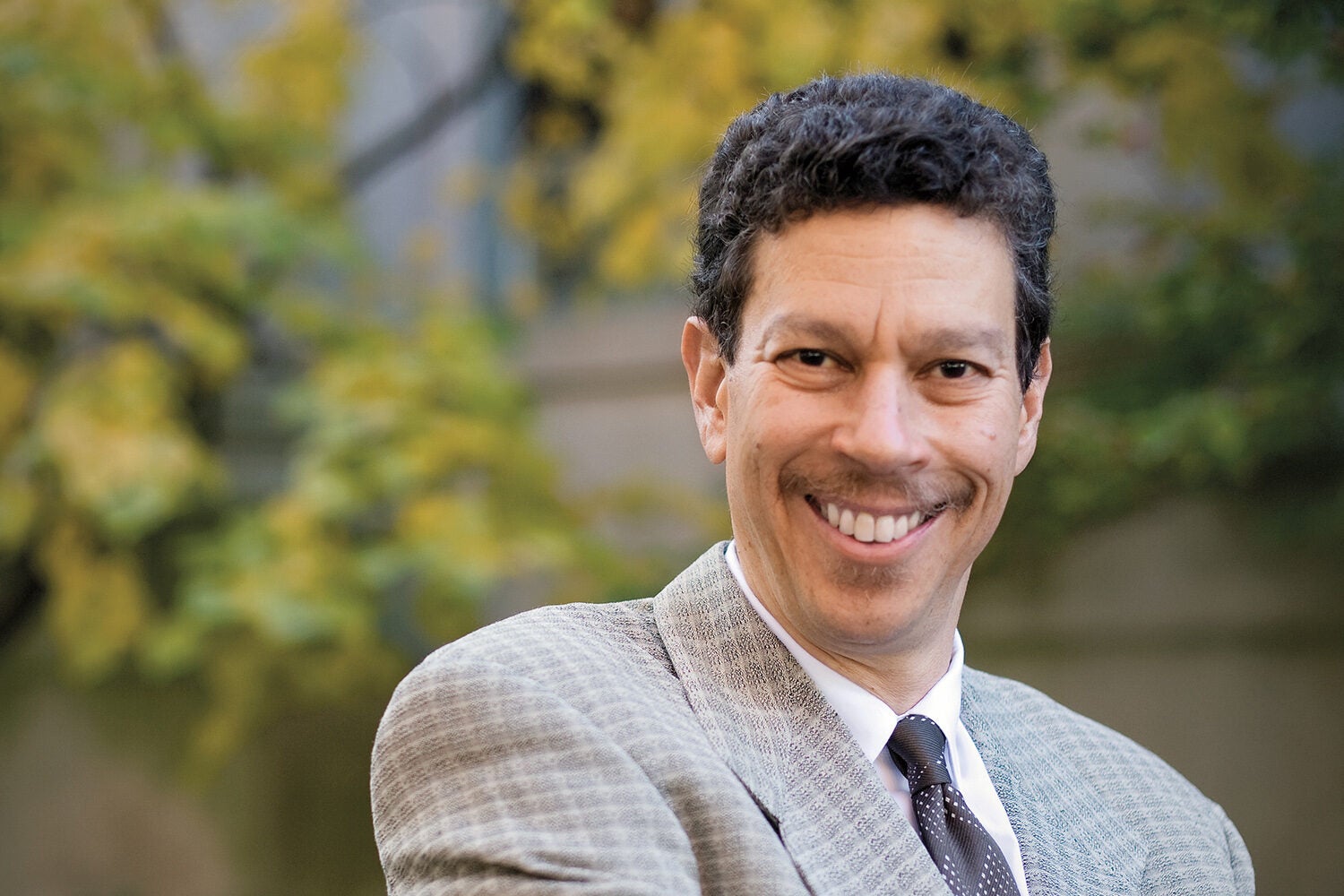Major corporations, once focused exclusively on shareholder profits, are increasingly being held accountable for how they are taking care of stakeholders — employees, suppliers, customers, consumers, and even the communities in which they do business. Major companies, like Microsoft, have reorganized their affairs to account for environment, social justice, and governance standards, or ESG for short. And the movement has gained such prominence that The Economist recently featured the debate over ESG on its cover.
Harvard Law School Professor David Wilkins, the faculty director of the Harvard Law School Center on the Legal Profession, says corporations are increasingly under pressure “to change the way in which they relate to the world, relate to the environment, relate to their stakeholders, and relate to broader issues around social justice.”
On September 15, 2022, Wilkins and the Center for the Legal Profession, along with Harvard Business School’s Institute for the Study of Business in Global Society, Harvard Kennedy School’s Center for Public Leadership, and Harvard University’s Data Science Initiative, will host a major conference, “Reimagining the Role of Business in the Public Square: Multistakeholder Engagement on ESG Commitments, Metrics, and Accountability” at which leaders from law, business, public policy, academia, and civil society will discuss ways to make meaningful progress on ESG commitments, metrics, and accountability.
For Harvard Law Today, Wilkins spoke with Dana Walters, associate editor of the center’s magazine, The Practice, about what participants and the audience can expect.

Harvard Law Today: This conference brings together experts from across Harvard University and beyond to discuss the role of business in the public square. Could you describe the origins of the conference, and why it was important to collaborate across Harvard schools?
David Wilkins: This conference came out of multiple issues that we began to encounter in our research on the legal profession. In conducting a set of surveys about how the events of the last two and a half years were affecting companies’ views of lawyers and the legal function, we discovered that social and racial justice, sustainability, and governance issues were increasingly ending up on the desks of legal teams. “Legal,” broadly construed, was becoming a central nexus in company ESG decision-making.
At the same time, Brad Smith, the president and vice chair of Microsoft, issued a memo reorganizing his corporate and legal affairs function in a way that reflected the increasing importance companies were placing on ESG. This made us realize that this was a huge question for lawyers.
But it was also clear that these debates went far beyond lawyers. So, when I called Brad, who is on the Center on the Legal Profession’s advisory board, about doing an event around his reorganization and these issues, we both agreed that it required multistakeholder engagement. From this, the Center on the Legal Profession assembled an unprecedented range of research centers and scholars from across the university to collaborate on these questions.
HLT: How do you define ESG and why has it become such a hot topic? What do you hope this conference adds to the narrative?
Wilkins: I’m going to disappoint you! — I can’t quickly define ESG. And that is actually a huge part of the challenge in thinking about these issues. Technically, it stands for environment, social, and governance. But if you think hard, each one of those things in and of itself is such a broad category.
To take a step back, it is important to note that these issues are not new, but have only taken on increased intensity in recent years. This is in large part because of the growing presence and power of new generations who have been vocal about their search for meaning and purpose in the jobs they take and the products they buy and the places where they invest their resources. ESG involves questions around climate change, social and racial justice, and economic inequality. And all of this is being translated into new ways of thinking about corporate governance.
Milton Friedman once famously said, the single social responsibility of business is to increase profits — period, the end! But even before COVID, this way of thinking about business was beginning to be questioned. In 2019, for example, the Business Roundtable argued that business should “redefine” the purpose of the corporation to include obligations to all “stakeholders” a business affects, alongside shareholders. Needless to say, there is skepticism about what all of this means in practice, but there can be little doubt that companies are under increasing pressure to change — or at least to appear to change — the way that they relate to the world.
We hope that our conference will help leaders refine what all of this actually means in practice. There’s been a lot of talk from corporate leaders and critics, but what there hasn’t been is enough discussion around how we make ESG commitments measurable, accountable, and effective. Indeed, that’s where some of the controversy exists. The term itself has become politicized, as the cover of The Economist reflects or a recent op-ed in The Wall Street Journal from former Vice President Mike Pence implies. There are broad political questions, of course, at play. But we hope to put some clarity around what the real debate is, about what’s at stake, and how to bring some serious academic rigor to thinking about these questions.
HLT: You’ve mentioned Microsoft and the Business Roundtable, both of whom will be making appearances at the conference. Who else is participating? Could you describe the event and what distinguishes it?
Wilkins: The event is divided into four parts.
In the first part, we will have a morning plenary designed to illuminate differing perspectives on the role of business in the public square. We begin with a series of lightning talks from leading voices within the corporate world on this question, including: Ken Frazier, the former CEO of Merck, and Ken Chenault, the former CEO of American Express, as well as Josh Bolton, CEO of the Business Roundtable and former chief of staff to President George W. Bush, who led the organization’s move to redefine the purpose of a corporation, and Harvard Law School’s Lucian Bebchuk, one of the world’s preeminent corporate law scholars, who has written a series of important articles sympathetic to the goals of ESG, but skeptical about the role of companies in producing change.
These talks will be followed by a series of conversations and panels with current corporate leaders, including Satya Nadella, the CEO of Microsoft and Dina Powell McCormick, the head of ESG at Goldman Sachs and a former high ranking government official in the Trump administration, as well as prominent leaders from outside the corporate sector, including Fred Krupp, the president of the Environmental Defense Fund, Sherrilyn Ifill, the former director counsel of the NAACP Legal Defense Fund and Gillian Tett, editor at large at the Financial Times, about the challenges of turning ESG commitments into action and how these differing groups can work together to achieve meaningful change. Finally, this first part will conclude with a discussion about the role of regulation featuring the chair of the U.S. Securities and Exchange Commission, Gary Gensler, as well as the CEO of the London Stock Exchange, Julia Hoggett.
In part two, we have invited Mitch Landrieu, the former mayor of New Orleans who is now President Biden’s senior adviser on infrastructure, to deliver a keynote address about how the Biden administration plans to incorporate ESG considerations into the distribution of $1.2 trillion in infrastructure funds. HBS Professor George Serafaim will follow to talk about how to quantify the benefits and costs of corporate ESG commitments. This will lead into what I consider to be the heart of the conference: a series of in-depth discussions about what it will take to actually “operationalize” corporate ESG commitments.
This third part will be comprised of concurrent sessions focused on cutting-edge issues at the heart of corporate ESG initiatives, including sustainable finance, public statements and engagement, the role of the board, metrics and indicators, workforce equity, the role of government as a regulator and a partner, and ESG innovations in emerging economies. Each session will be led by an expert in the field and will feature real-world case studies designed to stimulate a rich conversation among presenters and participants about the best way to make progress on these critical issues.
Finally, there is a closing plenary discussing strategies for the future, featuring the voices of university leaders like Harvard President Bacow and new Harvard fellow Tracy Palandjian, and new Vice Provost for Climate and Sustainability James Stock alongside young activists from the Sunrise Movement, March for Our Lives, and divestment movements at Harvard and Yale.
So, as you see, it will be a full day! We hope that those who attend will come away both with a better understanding of what it means to “reimagine the role of business in the public square” and the opportunities–but also the challenges – of creating effective strategies for achieving this goal.
HLT: What can audiences hope to see — in terms of outputs — after the event?
Wilkins: All of the public sessions — the morning plenary, the lunch keynote, and the closing plenary, will be recorded and preserved. The thematic sessions are all being conducted under the Chatham House Rule, but we’ll record the substance of what is said, and we plan to put together a publication about what we’ve learned in the course of this day, as well as cover the event in the center’s digital magazine The Practice.
But we hope this will be just the beginning of this conversation. Regardless of whether you are in favor of the way in which ESG is currently being described, or how it’s being operationalized, or you have serious qualms about it, I don’t think anybody can deny that these are among the most important problems for our society to grapple with in the middle decades of the 21st century.
